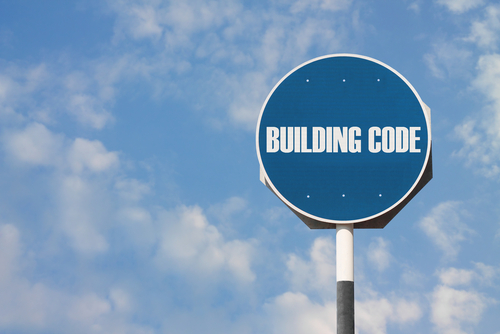
As the International Code Council (ICC) celebrates Building Safety Month in May, facilities professionals should understand the importance of constructing and maintaining safe and sustainable structures that follow constantly updated applicable building codes.
These changes are necessary after governmental and industry organizations like the National Institute of Standards and Technology (NIST) investigate facility failures and close calls, especially disastrous ones that resulted in or had the potential to result in substantial loss of life.
What Are Building Codes?
Building codes are laws that set minimum requirements for:
- Structural systems;
- Plumbing;
- Natural gas systems;
- Heating, ventilation, and air conditioning (HVAC) systems; and
- Other aspects of how residential and commercial facilities should be designed and constructed.
These codes start with a common draft language called a model code, which specifies fire safety, evacuation requirements, and weather impacts (like wind) a facility can withstand.
They’re based on the ICC’s building standards, which are developed with the advice of professional organizations in relevant fields.
Some of the organizations referenced in these codes include the American Society for Testing and Materials (ASTM) International, the National Fire Protection Association (NFPA), and the American Society of Civil Engineers (ASCE).
In the end, these model codes can become building codes, usually at the state or local level. But because model codes are based on standards, those hoping to revise the building codes should first consider getting the American National Standards Institute (ANSI) to update the appropriate standards.
ANSI Updates Building Standards
Committees representing standards organizations follow guidelines set by ANSI. These guidelines ensure all interested parties, which can include builders, manufacturers, building officials, researchers, and others, are equally represented.
New ANSI standard versions are published every 3 to 6 years and result from committees of dozens, or sometimes up to hundreds, of volunteer experts.
Steps for ANSI committees:
- Post a call for proposed changes by the public or the committee.
- Meet and vote on proposals.
- Hold a public review period on approved proposals, which includes issuing draft statements for public comment.
- Address all comments, or make a modification.
- If time doesn’t allow, change can be tabled until the next revision.
Committees intend for these standards to become part of the model code, which can be referenced by local and state governments. Basically, that means the work of ANSI gets forwarded to the ICC.
ICC Updates Model Codes
ICC model codes include separate codes for residences and new and existing commercial buildings. While they don’t strictly follow ANSI guidelines, they do aim to represent different interests on their committees, and they’re updated every 3 years.
Steps for ICC committees:
- Allow anyone to submit proposals to change the code.
- Vote on these proposals at public hearings, during which testimony can be given.
- Approve a proposal, accept it with modifications, or vote to disapprove.
- Open a second public hearing to a large pool of ICC governmental members, who then vote on how they’ll respond. The approved code gets published within 1 year.
How Model Code Becomes Law
These model codes become law when state and local lawmakers adopt them. Based on a variety of factors, building codes vary by state and jurisdiction. For example, Florida’s building codes focus on ensuring facilities can withstand hurricanes.
While new requirements can be struck out by government officials if they feel they aren’t needed, other officials will implement all updates and possibly add to them.
Learn More
Learn more about Building Safety Month by clicking here. Also, be sure to check out Facilities Management Advisor’s previous coverage of building rules, including Back to Basics: Most Common Fire Safety Code Violations and Back to Basics: The ADA’s Impact on Facility Compliance.
The post Back to Basics: Understanding Building Codes appeared first on Facilities Management Advisor.








0 Comments